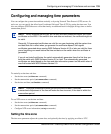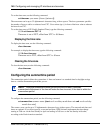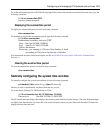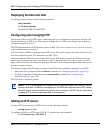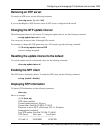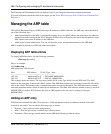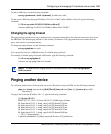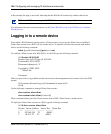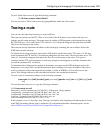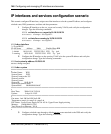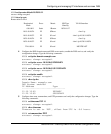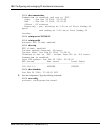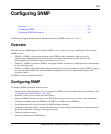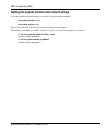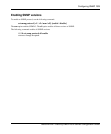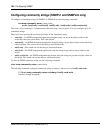
Configuring and managing IP interfaces and services 147
Nortel WLAN—Security Switch 2300 Series Configuration Guide
To clear Telnet client session 0, type the following command:
WSS# clear sessions telnet client 0
You also can clear a Telnet client session by typing exit from within the client session.
Tracing a route
You can trace the router hops necessary to reach an IP host.
The traceroute facility uses the TTL (Time to Live) field in the IP header to cause routers and servers to
generate specific return messages. Traceroute starts by sending a UDP datagram to the destination host with
the TTL field set to 1. If a router finds a TTL value of 1 or 0, it drops the datagram and sends back an ICMP
Time Exceeded message to the sender.
The traceroute facility determines the address of the first hop by examining the source address field of the
ICMP time-exceeded message.
To identify the next hop, traceroute again sends a UDP packet, but this time with a TTL value of 2. The first
router decrements the TTL field by 1 and sends the datagram to the next router. The second router sees a TTL
value of 1, discards the datagram, and returns the Time Exceeded message to the source. This process
continues until the TTL is incremented to a value large enough for the datagram to reach the destination host
(or until the maximum TTL is reached).
To determine when a datagram has reached its destination, traceroute sets the UDP destination port in the
datagram to a very large value, one that the destination host is unlikely to be using. In addition, when a host
receives a datagram with an unrecognized port number, it sends an ICMP Port Unreachable error to the
source. This message indicates to the traceroute facility that it has reached the destination.
To trace a route to a destination subnet, use the following command:
traceroute host [dnf] [no-dns] [port port-num] [queries num] [size size] [ttl hops] [wait
ms]
To trace the route to host server1, type the following command:
WSS# traceroute server1
traceroute to server1.example.com (192.168.22.7), 30 hops max, 38 byte packets
1 engineering-1.example.com (192.168.192.206) 2 ms 1 ms 1 ms
2 engineering-2.example.com (192.168.196.204) 2 ms 3 ms 2 ms
3 gateway_a.example.com (192.168.1.201) 6 ms 3 ms 3 ms
4 server1.example.com (192.168.22.7) 3 ms * 2 ms
In this example, server1 is four hops away. The hops are listed in order, beginning with the hop that is closest
to the WSS and ending with the route’s destination. (For information about the command options, see the
Nortel WLAN Security Switch 2300 Series Command Line Reference.)



